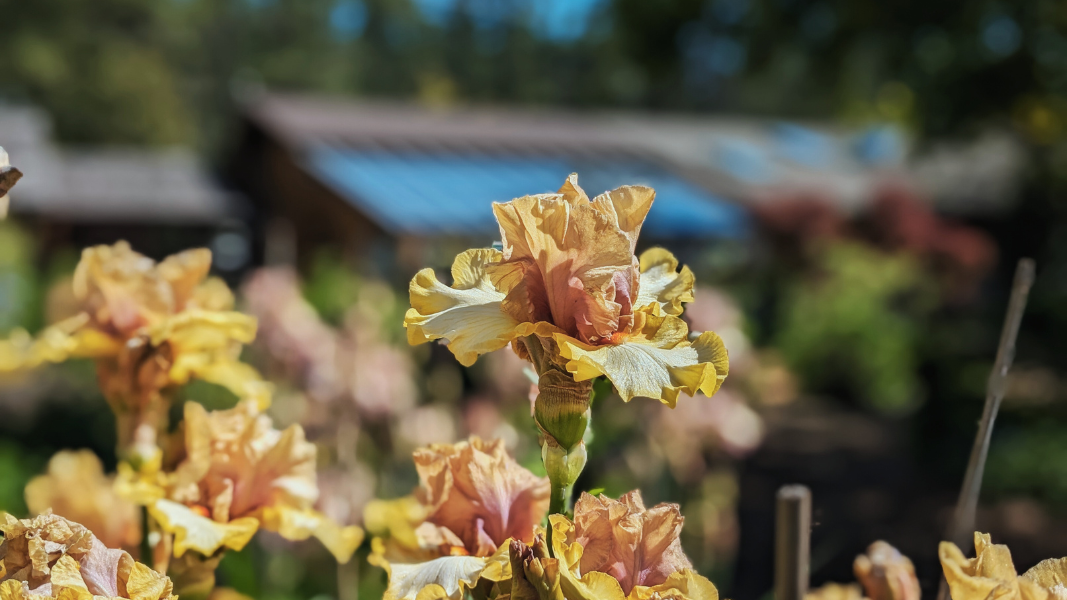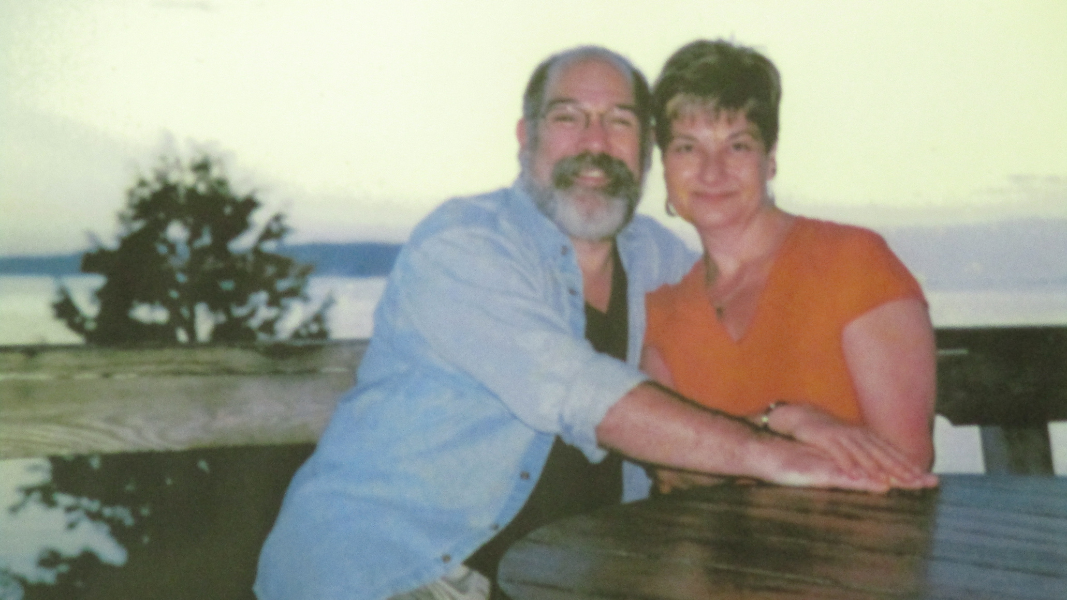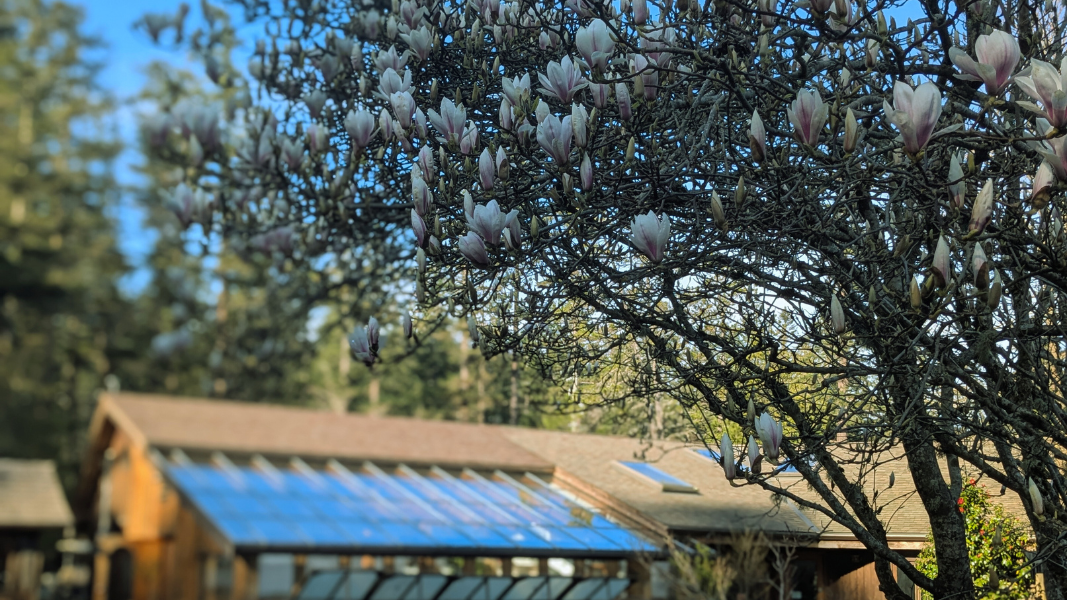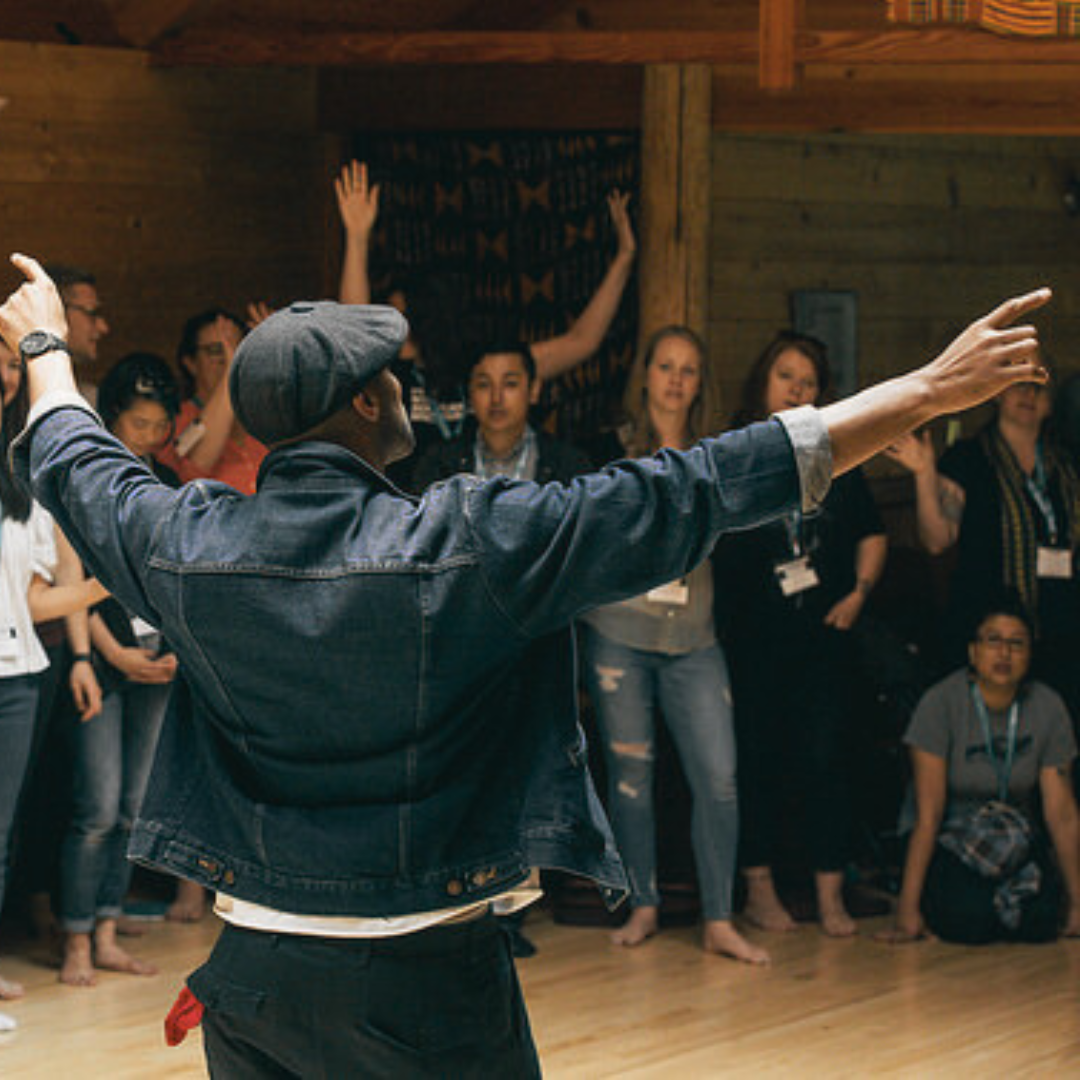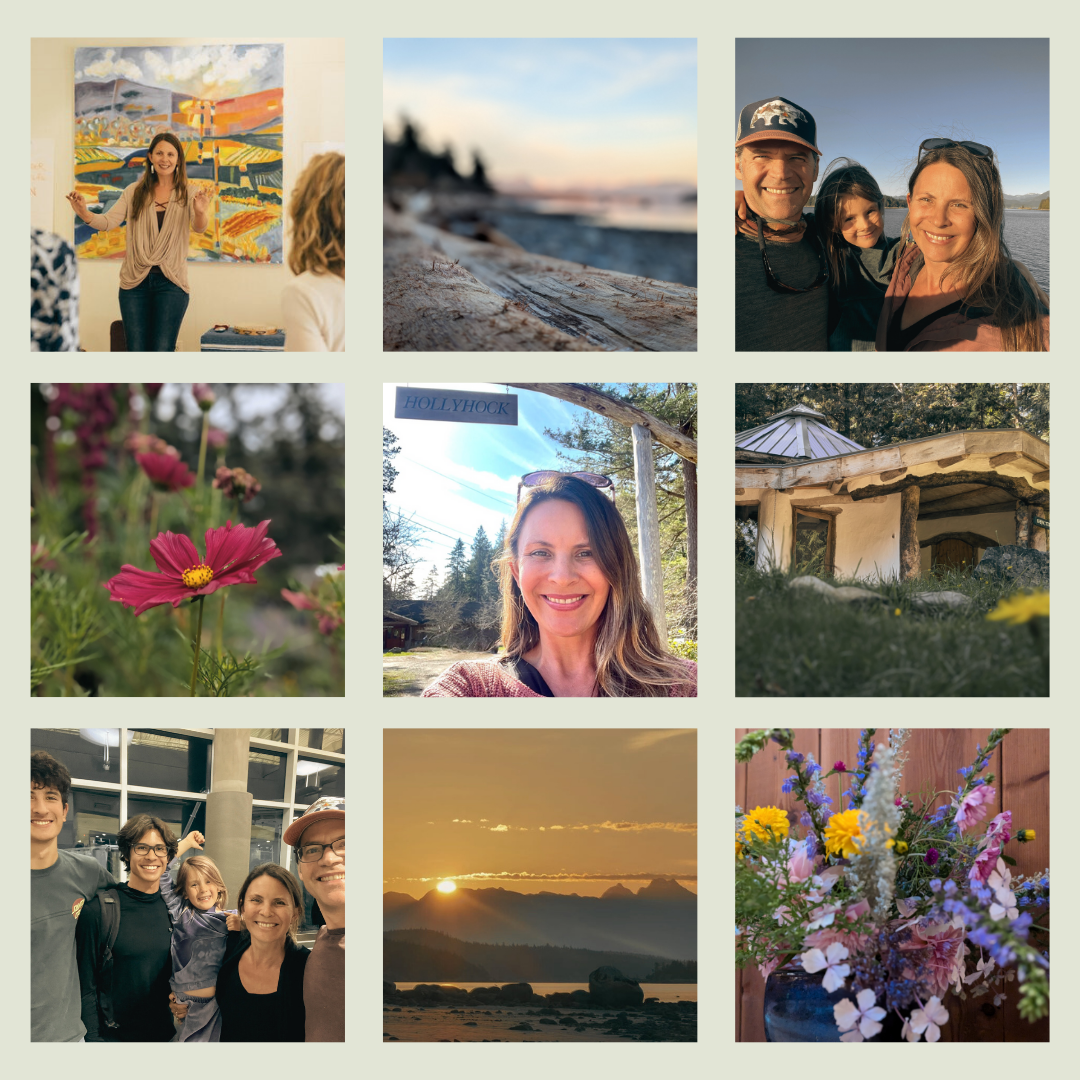Co-written by: Peter Wrinch and Dr. Amie Wolf
“These two rows symbolize two paths or two vessels, traveling down the same river together. We shall each travel the river together, side by side, but in our boat. Neither of us will make compulsory laws or interfere with the internal affairs of the other. Neither of us will try to steer the other’s vessel. Now we have symbolized this agreement and it shall be binding forever as long as Mother Earth is still in motion.” – Haudenosaunnee traditional Two Row Wampum agreement with Dutch settlers, Beyond Unceded
Peter Wrinch, Hollyhock CEO:
At the beginning of 2018, our leadership team at Hollyhock set out to re-write our campus orientation. The orientation is presented on the first night of every program throughout our six month season; about 40 times a year. For many it is their first introduction to us as an organization. In writing a new orientation we had two goals:
1. Honour the spirit of previous orientations by providing guests with a warm “landing” on their first night at Hollyhock. Our hope was to include enough information about their stay to make them feel connected and well taken care of.
2. Ground guests in the powerful energy of land, place, and people by acknowledging the local Indigenous people of Cortes, as well as the colonial history of British Columbia and Canada.
We started our new orientation with an expanded Indigenous territory acknowledgement and we chose our language carefully. Earlier in the year, we had engaged Jada Gabrielle Pape of Courage Consulting for a managers training on Cultural Safety. One of the first insights that Jada shared was that “language matters.” Regarding territory acknowledgments, she contextualized the difference between using the words, “traditional,” “ancestral,” and “unceded,” and helped our team understand the history and usage of each of these words.
“Traditional” means that Indigenous peoples used this land for hunting, fishing, trapping, and gathering for thousands of years; a period of time so long it is said to be, ‘out of mind’.
“Ancestral” means that these peoples were stewards of their traditional territory. Stewardship means caring for the land in order to pass it down in original condition from one generation to the next.
“Unceded” means that land was stolen and First Peoples were forced to relocate to reserves.
Later in the year, we began to work with Dr. Wolf to refine how we were presenting our territory acknowledgement. Amie challenged us to show up as our fullest selves and bring our own heartfelt understanding about the enduring impacts of land dispossession for the Klahoose, Tla’amin, and Homalco First Nations on Cortes Island. She also helped our team identify action items – things that Hollyhock can do to cultivate a lasting relationship of mutual benefit and non-interference with local Indigenous peoples.
The changes we made to the orientation have elicited lots of feedback with the majority of it being positive. A number of people have commented on how grounded they have felt being oriented to place and history; some have expressed happiness to hear Indigenous history being highlighted in a deeper way; others have expressed curiosity about the land and Indigenous history and have asked questions.
Dr. Amie Wolf, Perception Work Principal:
After attending Social Change Institute at Hollyhock last June 2018, I accepted an invitation from Board Chair, Joel Solomon, to support Hollyhock in further developing their Reconciliation path. Drawing on my expertise on Indigenizing teaching and learning in post secondary, I customized a comprehensive document called, How to Make a Territory Acknowledgement – A Guide for the Hollyhock Leadership Institute. I was delighted when Peter adopted my suggestion to go beyond the word “unceded.”
Hollyhock’s commitment to a path of organizational Reconciliation is part of a bigger picture. In the mid 1800’s, BC was settled mostly without treaties. This means that many of the 203 First Nations in the province currently have open land claims.
Paul Tennant’s book, Aboriginal Peoples and Politics: The Indian Land Question in BC, 1849-1989, explores this issue in detail. In 2014, the Supreme Court of Canada acknowledged Aboriginal title in the case, Tsilhqot’in vs. the Crown.
In the words of BC Premier John Horgan, this ruling made Reconciliation ‘inevitable’.
Premier Horgan and Prime Minister Trudeau also recently signed UNDRIP, the United Nations Declaration of the Rights of Indigenous Peoples. Article 26 directs states to give legal recognition to the right First Nations have to the lands and resources they have traditionally occupied.
Therefore, giving a territory acknowledgement to open events is a critical part of Hollyhock’s Reconciliation journey. It is a way to bring awareness of Indigenous presence and land rights into everyday operations. The personalized part makes the acknowledgement count, describing – in a caring way – how Hollyhock in particular is working to transform the Indigenous and non-Indigenous relationship.
Territory Acknowledgement Examples:
Amie has generously provided the following examples of territory acknowledgements for Hollyhock and for the broader progressive movement:
Standard
I (we) acknowledge that we are on the traditional, ancestral, and unceded territory (check if these words are accurate descriptions) of the ______ First Nation(s).
Personalized
Good evening and welcome to _______. I’m _______, the CEO/ED. It is my honour to open the conference tonight by acknowledging that we are on the traditional, ancestral, and unceded territory of the _______ First Nation. For thousands of years, the ______ (First Nation) stewarded this land, caring for and passing it down from generation to generation. This land was taken from the ________ in the 1800’s, and it is with a heavy heart that we remember how the ________ villages were destroyed, the remains of their ancestors and sacred artifacts taken, how their way of life – the Potlatch and ceremonies – were outlawed, how their children were forced to attend residential schools, and how all economic activity was banned on the 10 reserves members were relocated to and dispersed upon. Today, the impacts of colonization are real and ongoing. Our organization is aware of the devastating harm caused by policies of assimilation, and we wish to actively be a helpful part of the healing process; a journey we understand can only be determined by the _______ First Nation themselves.
Our organization is committed to changing how we have been in the past, to opening our eyes to the truth of what is happening, and to step up and to take a meaningful role in the work of decolonization. We are proactively working with the ______ (First Nation) to become involved in ways that are supportive of their initiatives to bring back their language and culture. A humble start, our organization continues to listen and to respond in ways that are helpful and meaningful as we find more ways to support the _______ people with their goals.
Photo Credit: Donna Martin



